The Young Adult genre has produced some of the biggest and most celebrated franchises in recent decades. Series like The Hunger Games, The Twilight Saga, and Divergent transcended their place in the YA book section to dominate fiction charts and, eventually, global box offices, so it’s clear that YA has a stronghold on the favored books of our contemporary moment.
But which are the best of all time?
In this article, bestselling author and writing coach Ella McLeod lists 25 of the best YA novels. Here, you’ll find familiar favorites as well as some you might have forgotten. As a Branford Boase nominee, Ella uses her expertise in the YA genre to select her top 25, providing thorough justifications for each.
Want to see your own book on the list? Join us in a writing class at The Novelry and start your YA novel with the courses, coaching, and community to support you all the way to ‘The End.’
What do we mean by Young Adult books?
The Young Adult section of publishing, and therefore of your local library and bookstore, categorizes certain books as being for readers aged 14–18 (8th to 12th grade in the U.S.). Though the age span for this category is less than ten years, as a genre, YA is growing significantly beyond its limits.
Where we started
Early Young Adult books were often traditional: life dramas with new friends at boarding schools, the arrival of annoying baby brothers, the anxieties of freshman year, and fewer fantasy worlds than those we see on shelves today. Some were marked by outrage and controversy surrounding the types of experiences the characters were seen to be having on the page, but these bestselling books (many of which were borrowed from friends or older sisters) are often thought of as life-changing and affirming by the young people who learned about life by reading them.
Where we are now
Today, the topics and characters seen across books that are published for the YA market are broader than ever, producing an incredible global bookshelf of stories for young people. Moreover, the YA of today is an incredible mix of subgenres, populated not just by the classics, some of which we will look at below, but also by a whole new family of talented authors with important stories to tell. With some titles receiving an extra push through TV and movie adaptations or a viral moment on BookTok, YA literature has seen a significant crossover in readership over recent times.
YA novels will, of course, always be for teenagers; they are often credited with helping young people to explore not just the life they have, but the life they may dream about—and yet the adult readership of this genre is expanding, as we will see.
.avif)
Collectively, the stories Ella has selected span decades as well as worlds, and are notable for their incisive writing, their unflinching look at life issues that can (and often do) affect any young adult, and are the best of the best when it comes to thinking about what makes a great YA novel.
If you’re thinking about writing in the YA sphere and you want a primer on the best and brightest stories on the shelves, look no further. Ella has carefully chosen an incredible selection of Young Adult books for you to enjoy.
So get out that library card, head to town with a friend, and start stacking up that pile on your nightstand!
.avif)
YA and my own life
I often say that not for a million dollars would I want to revisit my adolescence. The anxiety, the insecurity, the heartbreak—all of it endured without the life experience to peacefully metabolize it.
While there are limited chances of my happening across a time machine or a dolls’ house sprinkled with magic wishing dust in my own life à la 13 Going on 30 (though I suppose this would be the far more miserable sequel, 30 Going on 13), I have revisited my adolescence myriad times. This is, of course, because as a reader and writer of Young Adult books, I am frequently forced to confront the aforementioned anxiety, insecurity, and heartbreak of my own teen years.
A crossover between teens and grown-ups
Young Adult (YA) literature is the space within publishing carved out for those in-between years. While YA is generally considered to be for readers between the ages of 11 and 17, this is no remote corner of the library. There is an increasingly large crossover space in the genre, given legs and life by the social media booms that cater to ‘emerging adulthood.’
A study conducted by HarperCollins in partnership with Nielsen Book, the U.K.’s leading book industry data provider, indicates that the number of adult readers engaging with YA novels has increased over the course of the last five years. The report revealed that 74% of individuals who read YA were adults, with 28% of them being over 28 years old.
.avif)
What YA means to me
While writing my own YA books Rapunzella, Or, Don’t Touch My Hair and The Map That Led To You, I spent a lot of time thinking about what makes good Young Adult literature.
There are many things to consider: commercial success, stories that redefined or recontextualized the category, stories that speak to something new, profound, or difficult to articulate.
I’ve written about this further in my blog on writing for teenagers versus writing about them, but nothing distinguishes YA like its use of voice. The teenage years are so full of firsts and big feelings that the closeness of the narrative on its protagonist—and often, as a result, the use of first person—serves to root readers in stories that are intimate, compelling, and relatable.
.avif)
The young adult through history
Young Adult (YA) fiction has evolved significantly over the years. To understand the hows and whys of this space’s emergence, I think we first need to tease out when the concept of the young adult—the teenager, the adolescent—became so socially and culturally reified that publishing deemed them worthy of their own shelf.
In many pre-industrial societies, once a person reached puberty they were considered an adult, and there were rites of passage to mark this transition. Kids went out to work, girls were married as soon as they were biologically able to bear children, and young people typically took on adult roles in the family at a much earlier age, often taking the place of mothers and fathers for younger siblings.
During the Industrial Revolution, the roles and expectations for young people began to shift. With the rise of factory work, children were increasingly seen as needing protection from harsh labor conditions, leading to the establishment of child labor laws. Alongside this came great access to secondary education and the implementation of compulsory school acts, which required young people to stay in school longer and delay their entry into the workforce.
By 1918, across the U.K. and the U.S.A., most adolescents were required to remain in school until they were at least 14, as a matter of course.
The ‘teenager’ and the rise of youth culture
In the 1920s and 1930s, there was a growing cultural recognition of youth as a separate demographic group. The rise of youth culture—including music, fashion, and social clubs—helped reinforce the idea that teenagers had their own interests, desires, and identities that were separate from those of adults. Think flappers and jazz; think Western women wearing corsets less and trousers more.
But it was World War II that precipitated the most significant changes. The period following the war saw economic prosperity, a boom in consumer culture, and an expansion of leisure time in the life of a typical young person. This created a distinct ‘teenager’ market.
The term ‘teenager’ itself became widely used in the 1940s, and by the 1950s, the teenager of the family was firmly established as being of their own cultural and social identity.

Fiction for teenagers
And so—to books!
While stories about teens existed earlier, it was in the 1960s that Young Adult fiction began to emerge as a distinct category and teens really began to be considered as a group to be written for and catered to.
Today, YA books encompass a wide range of genres, from fantasy and dystopian fiction to contemporary and LGBTQ+ narratives, and as a specific area of publishing it continues to attract a diverse audience. It remains a dynamic space for exploring life, identity, social issues, and the transition from adolescence to adulthood.
.avif)
How do we define the best Young Adult books?
Below, you’ll find my list of the 25 best Young Adult books of all time. Before I start getting furious emails, I want to address some pretty glaring omissions and take a moment to discuss why these books, while absolutely sensational, have been edited off my list.
While all of these books hold a very special place in my heart, for the purposes of this list (and, truly, the impossibility of trying to condense all of YA into just 25 titles), I am being very strict with my categorization of what would constitute YA. That is to say:
Was this book written for teenagers instead of just about them?
While many novels have found teenage audiences, often as a result of being included on school syllabuses, for a book to be truly YA, the adolescent readership must be at the forefront of the writer’s mind and clear in the subsequent marketing.
My not-on-the-list list
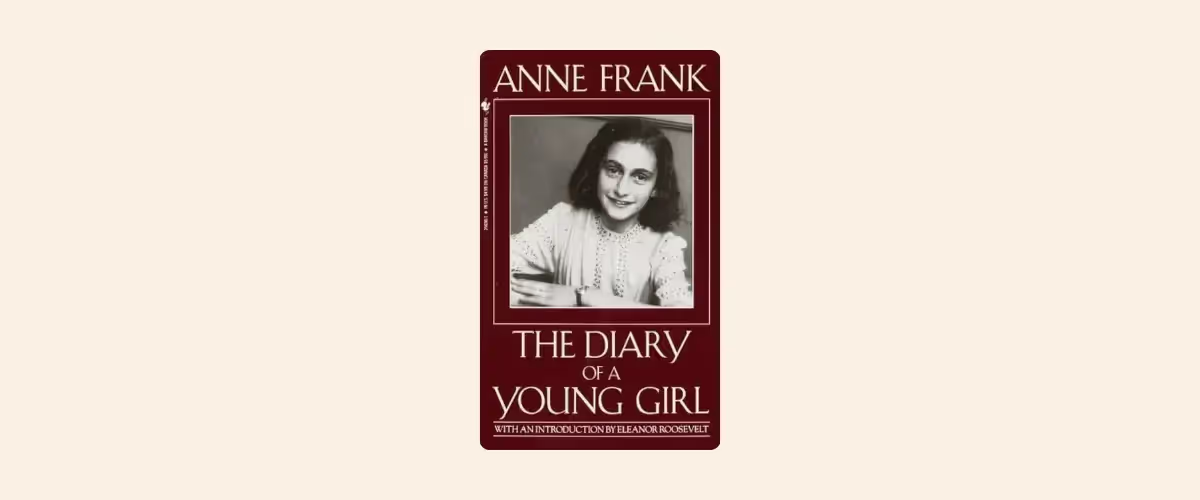
The Diary of a Young Girl by Anne Frank (1947)
Undoubtedly one of the most profound and unflinching insights into adolescence, I read this book when I was far too young, and it changed my brain chemistry. Then I read it again and again. Currently, my copy has no front or back cover.
Not only is Anne Frank one of the most well-known and most discussed Jewish victims of the Holocaust, her writing providing an invaluable historical education, but her diary is introspective, sensitive, and reflective in a way that speaks to the universal coming-of-age experience despite the horror of her and her family’s circumstances. While many young people have sought solace and understanding through the diary of her life in Nazi Germany, I believe this book transcends age categorization and so I have left it off this list.
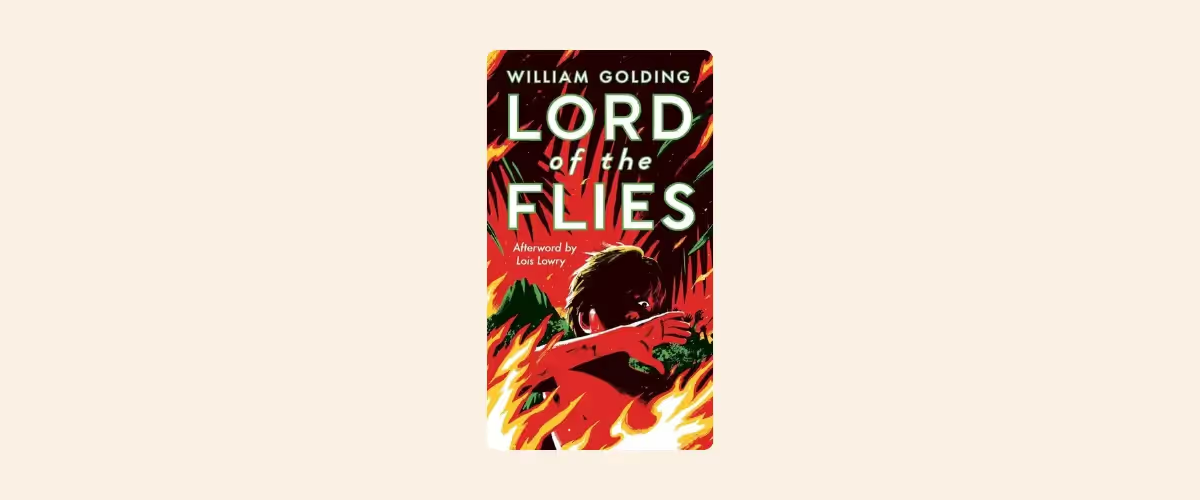
Lord of the Flies by William Golding (1954)
A stark exploration of human nature, particularly the tension between civilization and savagery, Golding’s novel follows a group of boys stranded on a deserted island. As they attempt to govern themselves, their pseudo-society quickly descends into a dangerous place full of chaos and violence.
One of the main themes of this novel is the loss of innocence. The story remains as chilling now as when it was first published, but in my opinion, it falls into the about and not for paradigm. Golding used the characters of teenage boys as a proxy for the savagery he witnessed during the war without speaking to the adolescent experience.
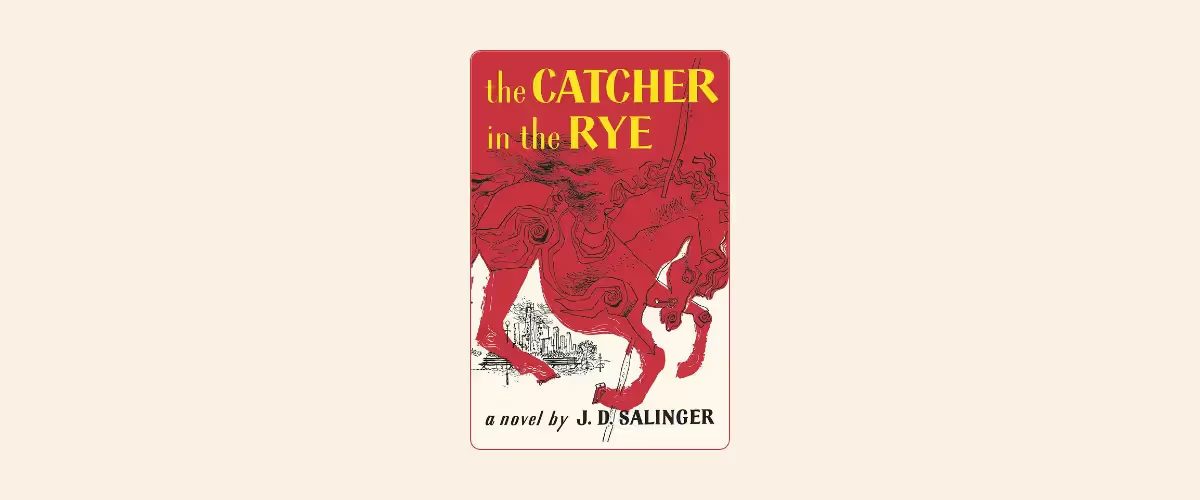
The Catcher in the Rye by J.D. Salinger (1951)
Holden Caulfield, a disaffected teenager, leaves his prep school and wanders around New York City. Struggling with depression and a fear of adulthood, he reflects on his experiences and relationships, ultimately seeking meaning and connection in a world that he finds phony and confusing.
Another text that changed the shape of texts that would follow, The Catcher in the Rye is often thought of as one of the first Young Adult novels, if not the first. While it’s hard to find teenage angst more purely distilled than it is in this story, I think, once more, that this is a book for adults written about teenagers.
The Catcher in the Rye perfectly bridges the gap between adults and adolescence, gives an unflinching insight into the disillusionment that often accompanies coming-of-age, and is a brilliant portrait of an imperfect protagonist. While Holden’s lack of maturation throughout the novel sets this text apart from what might be thought of as YA, perhaps its 1940s serialization and its 1951 publication could allow for Salinger’s novel to be considered a proto-YA, the jazz to YA’s R&B.
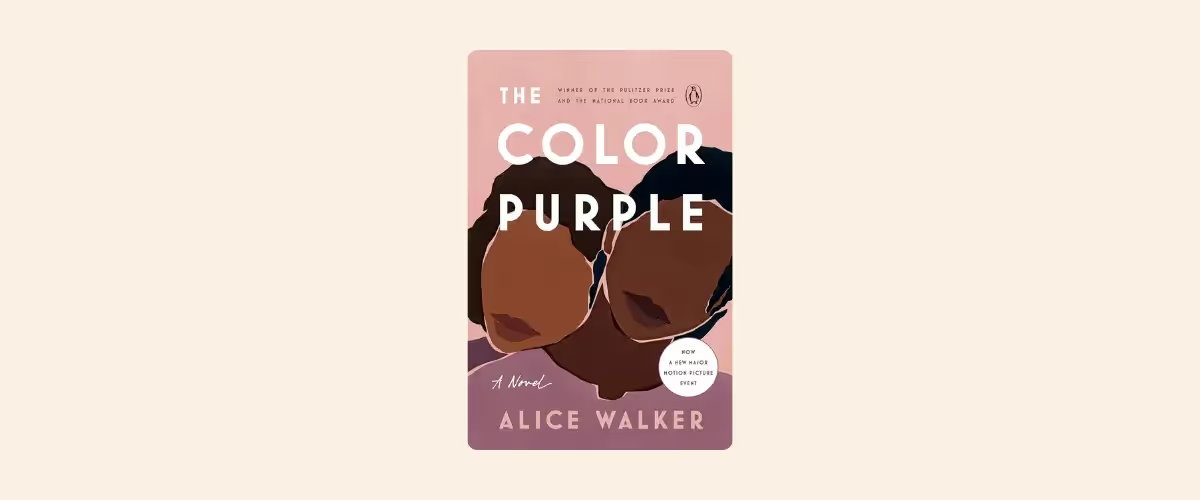
The Color Purple by Alice Walker (1982)
This is quite possibly one of my favorite books of all time. Celie is an African American woman in the early twentieth-century South who overcomes abuse, oppression, and separation from her sister. Through letters and relationships, she discovers her own strength, finds love, and ultimately gains independence and self-empowerment.
A beautiful coming-of-age story, The Color Purple is one of the greatest novels ever written, in my opinion, and as a 15-year-old, I loved this book. However, while Celie is 14 years old when first we meet her, this book contains explicit and mature themes and should be read with discretion, which is why I have chosen not to include it in the main list.
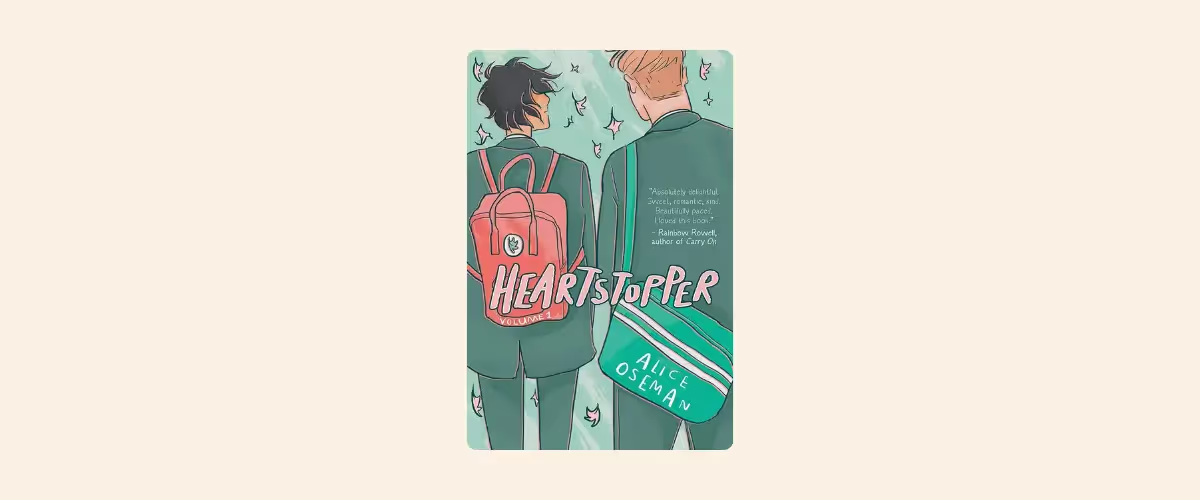
Heartstopper by Alice Oseman (2019)
A gorgeous, Netflix-adapted graphic novel series following the blossoming romance between two British teenagers: Charlie, a shy and openly gay boy, and Nick, a popular rugby player. Nothing makes me want to squeal and kick my legs like Heartstopper and I’ve only left it off the GOAT list of favorite books because I have to draw the line somewhere, and YA graphic novels are an art form in their own right and deserve to have their own list.
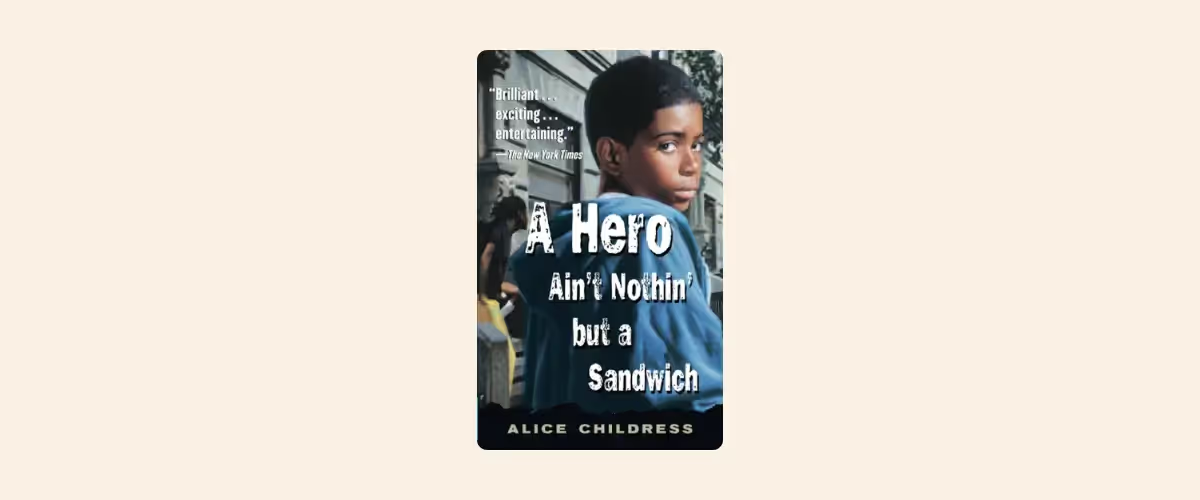
A Hero Ain’t Nothin’ but a Sandwich by Alice Childress (1973)
This story follows Benjie, a 13-year-old boy growing up in a tough urban neighborhood. Struggling with peer pressure, family issues, and the allure of drugs, Benjie grapples with the complexities of identity and the search for role models. The novel explores themes of adolescence, societal expectations, and the difficulties of finding positive guidance in a challenging environment.
A stunning interrogation of coming-of-age amid class and race tensions, the story is told from the perspective of not just Benjie, but also his mother, his teacher, and other adults in his life. It’s a beautiful piece of fiction, but I feel the inclusion of adult perspectives reflecting on their relationships with and concerns about Benjie sit this story outside of YA.
The best of the best
Okay, okay. I hear you. I’ve rambled on long enough! While the stories listed above all contain strong elements of YA literature in several valuable forms, let’s get to the main list of the best YA books of all time...
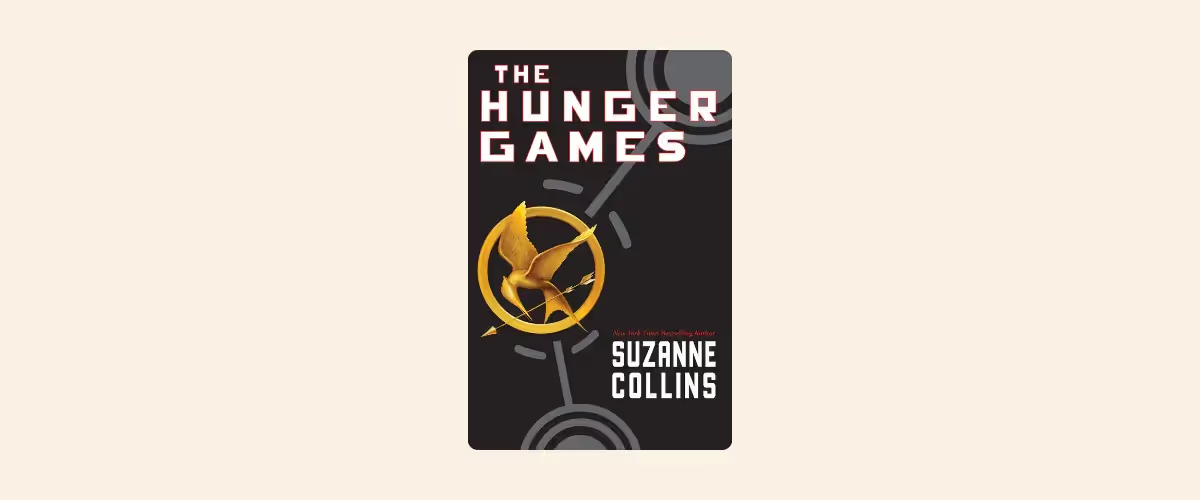
The Hunger Games by Suzanne Collins (2008)
A story set in a dystopian future where the totalitarian nation of Panem forces each district to send one boy and one girl, called ‘tributes,’ to participate in the annual Hunger Games, a televised battle to the death. Katniss Everdeen volunteers in place of her sister and must navigate survival, alliances, and moral dilemmas in the brutal arena, all while questioning the oppressive government.
The Hunger Games had a profound impact on the Young Adult genre, reshaping both its themes and its popularity, and it contributed heavily to the rise in dystopian fiction. It also gave rise to the popularity of...
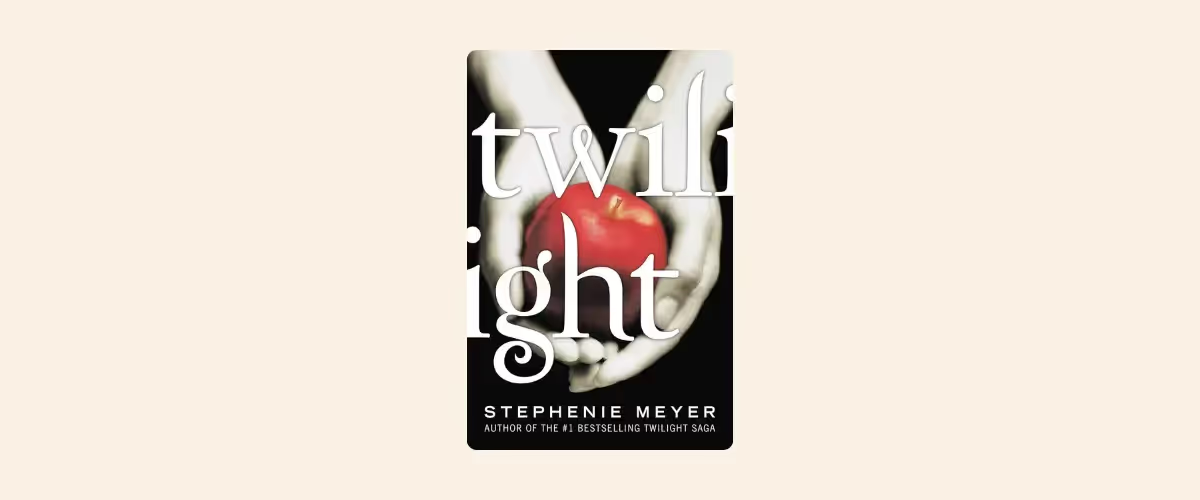
Twilight by Stephenie Meyer (2005)
Bella Swan, a teenage girl who has moved in with her father in the rainy town of Forks in Washington state, falls in love with Edward Cullen, a mysterious vampire who attends her high school in human form. As their relationship deepens, Bella navigates the dangers of the supernatural world, including the threat of other vampires, while Edward’s attraction for her is heightened and complicated by his desire to drink her blood.
This book is partly responsible for all the brooding, complicated male love interests that followed—all of that delicious YA ‘I want him but I shouldn’t’ yearning, often including love triangles. It’s also responsible for teenage me wanting a boy to sneak in through my window to watch me sleep... Our sense of duty of care to our young readers has evolved somewhat since the early 2000s, but Twilight, as a story, remains undeniably iconic.
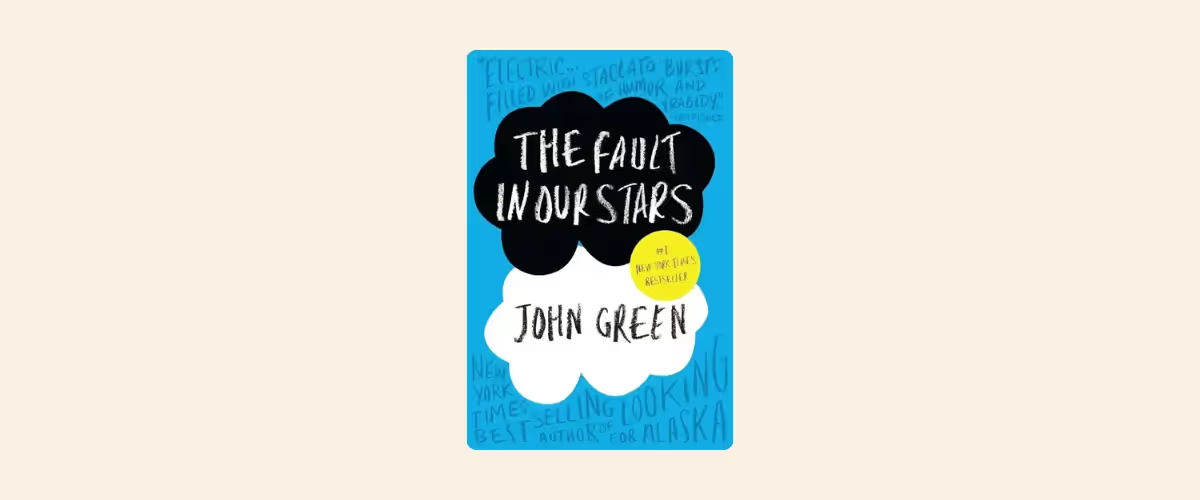
The Fault in Our Stars by John Green (2012)
The Fault in Our Stars by John Green tells the story of Hazel Grace Lancaster, a 16-year-old cancer patient who meets Augustus Waters, a charming cancer survivor. As they fall in love, they navigate the challenges of illness, mortality, and the meaning of life.
It’s poignant, meaningful, absolutely devastating, and possibly the book that taught publishing execs that teenagers love to cry their eyes out on the internet. I remember reading this book on holiday as a teenager and bawling my eyes out on a sun lounger before looking over to see another girl about my age, also reading The Fault in Our Stars and also crying her eyes out on a sun lounger. Thank you, John Green. Obsessed.

The Henna Wars by Adiba Jaigirdar (2020)
The Henna Wars by Adiba Jaigirdar follows Nishat, a Bangladeshi-Irish teenager who struggles with her identity, cultural expectations, and her feelings for her classmate Flávia. When they both enter a henna competition, their rivalry turns into a complicated mix of friendship, attraction, and self-discovery.
This charming yet nuanced romcom authentically captures the high-school experience while addressing racism and homophobia. The world needs The Henna Wars, adolescent me needed The Henna Wars; in YA books, representation really matters, and I’m so glad today’s teens can read stories that not only center young queer women of color but also give them happy endings.

Breathe: A Ghost Story by Cliff McNish (2006)
Breathe is Cliff McNish’s first standalone book. The story centers on a group of ghostly children imprisoned in an old farmhouse by a malevolent spirit known as the Ghost Mother. Twelve-year-old Jack, who suffers from chronic asthma, moves into the house with his widowed mother, only to discover that the Ghost Mother has sinister intentions, particularly toward Jack himself.
This novel won the Calderdale Award, the Virginia Readers’ Choice Award, and the Salford Award and was shortlisted for the Rhode Island Teen Book Award and the Texas Lonestar Awards. In May 2013, it was recognized by the U.K. Schools Library Network as one of the top 100 all-time adult and children’s novels.
Atmospheric and truly chilling while being sensitive, the supernatural elements are not just for thrills but serve as metaphors for Jack’s grief and isolation and the bonds between his family members.

The Upper World by Femi Fadugba (2021)
The Upper World by Femi Fadugba follows Rhia, a gifted teen from a tough neighborhood, and Esso, a boy with the ability to experience moments from the future. As their paths collide, they uncover a hidden world of time manipulation and face dangerous choices that could change their fates.
With its fresh take on time travel, multifaceted characters, social commentary, and thought-provoking exploration of personal agency, The Upper World is a YA sci-fi novel that excels.
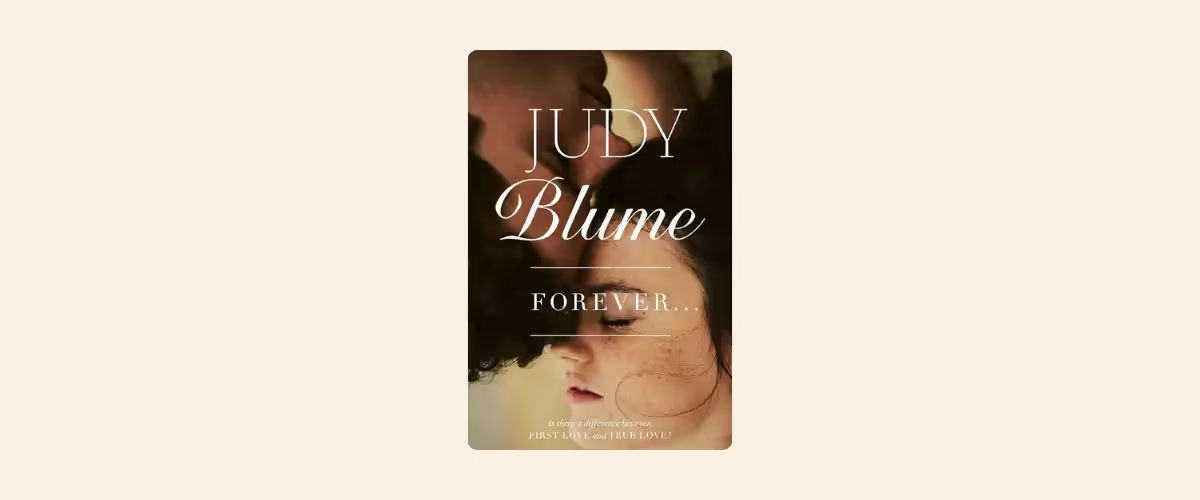
Forever by Judy Blume (1975)
This novel, which is about to turn 50, follows Katherine, a high-school senior from New Jersey, as she navigates her first sexual relationship with Michael, a boy she meets at a New Year’s Eve party. It’s tender, honest—and famously explicit. As a result, it appears on the American Library Association’s list of the 100 Most Frequently Challenged Books of 1990–2000 at number 7, and in 2019, BBC News listed Forever on its list of the 100 most influential novels.
It’s a trailblazer of a story and was ahead of its time, framing one girl’s conversations about sexuality as a personal choice based on health and emotional readiness rather than a moral dilemma, as well as presenting an unflinchingly honest look at burgeoning sexuality and romance.

Little Women by Louisa May Alcott (1868)
Little Women endures due to its family of timeless characters—particularly Jo, the independent creative who loved to write and defied traditional female roles. Her sisters, Meg (motherly and romantic), Beth (the tragically sweet musician), and Amy (vain, but her character is perhaps the one girl who undergoes the most personal growth), also embody relatable and compelling archetypes, ensuring the story of the March family remains as timely now as it ever was.
Louisa May Alcott wrote in a time before Young Adult literature was really acknowledged as a distinct category, but she recorded in her journal how she was instructed by her publisher to ‘write a book for girls.’ When she sent the first 12 chapters to her publisher, the general consensus was that they were boring. But her publisher’s niece read them and said she enjoyed them. The full manuscript was shown to several young girls who agreed it was ‘splendid.’ Alcott wrote in her journal: ‘They are the best critics, so, I should definitely be satisfied.’

Firekeeper’s Daughter by Angeline Boulley (2021)
Daunis Fontaine, an 18-year-old biracial teen, has always felt like an outsider and hoped to leave her small town and study medicine. A family tragedy forces her to stay home, where she accidentally witnesses a crime and soon becomes involved in a complicated and affecting FBI investigation.
This brilliant novel challenges common crime genre tropes around policing and blends thriller, romance, and an exploration of Indigenous identity. The story epitomizes the characteristic of a ‘page-turner,’ and its protagonist is extraordinary. Unsurprisingly, it became a No.1 New York Times bestseller, a Reese’s Book Club pick, and has been optioned by the Obamas’ production company for a Netflix series.
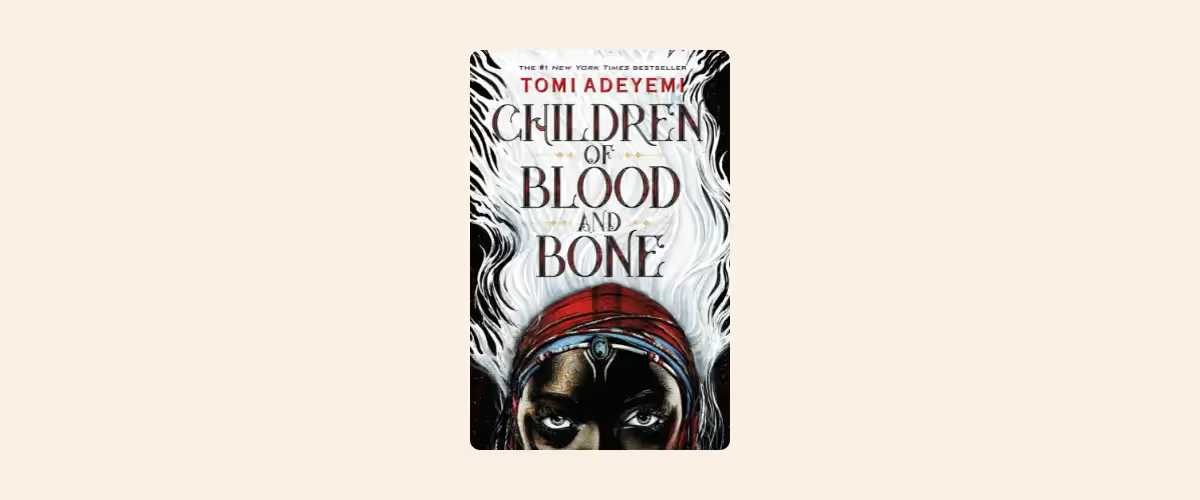
Children of Blood and Bone by Tomi Adeyemi (2018)
Tomi Adeyemi’s Children of Blood and Bone is a captivating fantasy story set in a rich fantasy world inspired by West African mythology. The first book in a trilogy, it follows Zélie Adebola, a teenager determined to restore magic to her kingdom after an oppressive monarch destroys it and kills her mother.
The story interrogates marginalization, provides much-needed representation for Black readers in the YA fantasy space, particularly those with West African heritage, and has been optioned for a film adaptation by Fox 2000. A game changer, for sure.

Angus, Thongs and Full-Frontal Snogging by Louise Rennison (1999)
Georgia Nicolson is a whiny drama queen and it’s so damn funny. Irreverent, charming, and incredibly honest, the novel is a series of diary entries from 14-year-old British girl Georgia as she navigates adolescence, dealing with such things as conflicts with friends, falling in and out of love, and being routinely embarrassed by her mother and father.
Another one for the banned books list due to its many sexual references, Angus, Thongs—as we used to call it—was adapted into a movie by Gurinder Chadha in 2008 (though the name was changed to Angus, Thongs and Perfect Snogging; while I understand that ‘full-frontal’ might be a bit much for a teen flick, I’m not sure ‘perfect’ accurately captures what it is to snog as a teenager, but maybe that’s just my experience). Rennison went on to write nine sequels, collectively known as the Confessions of Georgia Nicolson series, and this story remains a core favorite for many readers.

Noughts and Crosses by Malorie Blackman (2001)
Noughts and Crosses by Malorie Blackman is a dystopian novel set in a world where society is divided by race, with ‘Crosses’ (Black people) in power and ‘Noughts’ (white people) oppressed. It follows the friends-to-lovers relationship between Sephy, a Cross, and Callum, a Nought, challenging societal boundaries and prejudice.
By flipping the typical racial hierarchy, Blackman forces readers to confront prejudice, racial injustice, and the realities of inequality in an impactful, imaginative way. Combine this with the Romeo and Juliet-esque forbidden romance between one boy and one girl, and you have one of the most formative, defining, bestselling novels in the space, which has also won multiple awards and been adapted for stage and screen. This book changed my life.

The Sun Is Also a Star by Nicola Yoon (2016)
The Sun Is Also a Star by Nicola Yoon follows two teenagers, Natasha and Daniel, whose lives collide in New York City. Natasha is a Jamaican immigrant facing deportation, and Daniel is a Korean-American who dreams of becoming a poet. They spend a day together, exploring love, fate, and identity in this heady, delicious romantic novel. This National Book Award finalist was also adapted into a hit movie in 2019 starring Yara Shahidi and Charles Melton.
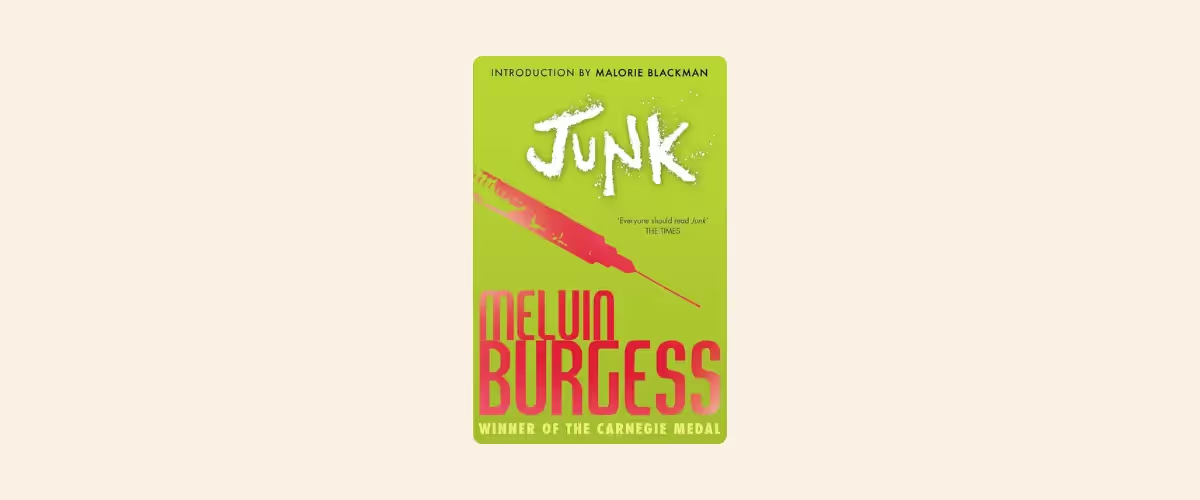
Junk by Melvin Burgess (1996)
Junk by Melvin Burgess is the story of two teenagers, Tar and Gemma, whose lives spiral into the world of heroin addiction, crime, and dangerous relationships. The novel’s raw portrayal of addiction and its impact on youth culture has made it a significant work in YA literature. Its unapologetic, unflinching approach to tough topics resonated with readers, earning it critical acclaim. It won the Carnegie Medal, was nominated for multiple awards, was praised for its impactful social commentary, and is remembered by me as the book read by the cool, smart older girls at school. Junk, you will always be famous.
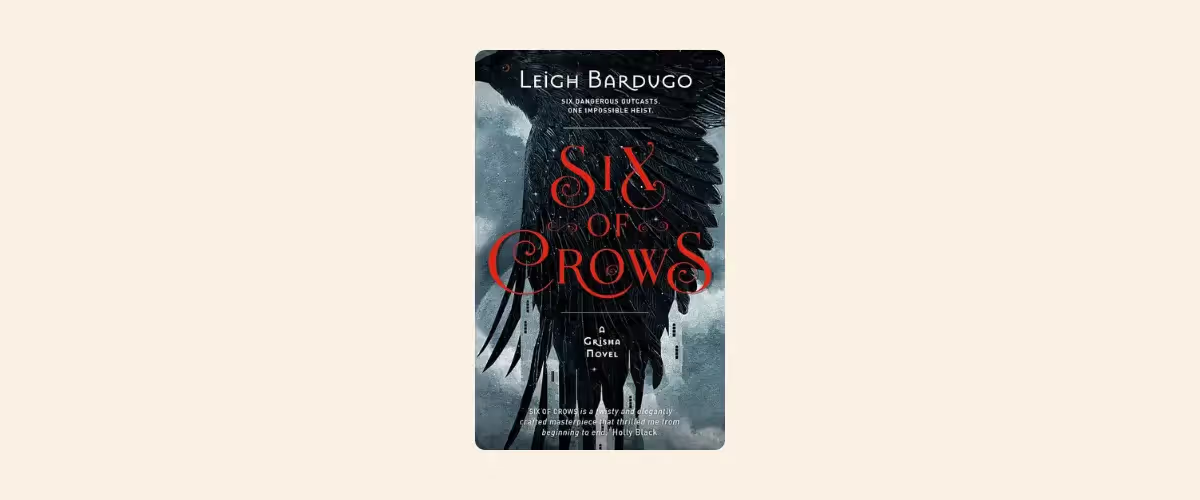
Six of Crows by Leigh Bardugo (2015)
Leigh Bardugo’s debut, Shadow and Bone, was also a contender for this list, but Six of Crows clinched it for me. It expands her Grishaverse, introducing a new cast of characters in this thrilling heist fantasy. It is the first book in a duology that weaves in revenge and romance.
The story follows 17-year-old Kaz Brekker, a criminal mastermind in a corrupt and seedy underworld, and his team—each with their own unique skills—as they attempt a dangerous mission for a life-changing fortune.
Bardugo explores morally gray characters, the thin line between good and evil, and the kind of friends-as-found-family we all want to be a part of. Published in 2015, Six of Crows is rich with complex, diverse characters and quickly became a bestseller. While it hasn’t been given its own adaptation yet, the Shadow and Bone series was adapted by Netflix in 2021 and sees the Crows family make an appearance. Ultimate ‘squad goals.’
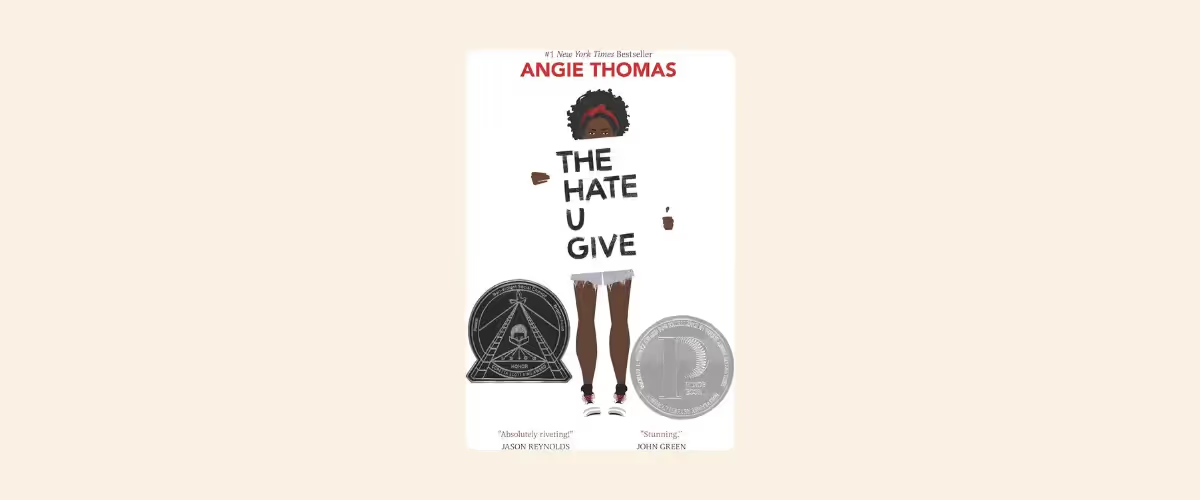
The Hate U Give by Angie Thomas (2017)
Starr and Khalil are childhood best friends from a working-class, Black neighborhood, though they’ve drifted since Starr won a scholarship to a fancy private school. They reconnect at a party and sparks fly.
In a sudden and shocking act of violence that seems to become more grotesque in its ubiquity, Khalil is fatally shot and killed by a white cop during a traffic stop. Starr is the lone witness. The novel follows her pursuit of justice as well as her struggle to reconcile who she is, what she’s seen, and the worlds she straddles.
Thomas examines identity, social justice, and the complexities of finding one’s place in a divided world. Adapted into a movie starring Amandla Stenberg, calling this novel ‘timely’ feels glib—and yet the fact that I desperately hope for the day that it is no longer reflective of our milieu speaks to just how well it is crafted.

The Black Flamingo by Dean Atta (2019)
Michael Angeli is a mixed-race gay teenager living in the U.K., struggling to reconcile his Greek-Cypriot and Jamaican heritage with his burgeoning queerness. As Michael discovers the transformative power of drag and creates his alter ego, the Black Flamingo, so too is the YA genre transformed, as this novel proves that the overwhelming newness of coming-of-age goes hand in hand with the poetic form.
Dean Atta is an absolute master of the verse novel; his Only On The Weekends is also stunning and hilarious, but this book is so special and tender and insightful. For a long time, ‘poetry’ in the teenage consciousness has been associated with something unrelatable and remote, something studied in English lessons that is only interrogated to appease a mark scheme. YA verse novels are not just a necessity but an inevitability. Released in 2020, The Black Flamingo won a Stonewall Book Award.

To All The Boys I’ve Loved Before by Jenny Han (2014)
Lara Jean Song is 16 years old and loves love, but her world is turned upside down when the love letters she wrote to past crushes are accidentally sent out. One boy, Peter Kavinsky, the recipient of one of the letters, proposes a fake relationship to make his ex jealous, and Lara agrees, hoping her current crush will notice her. As they pretend to be a couple, unexpected feelings develop.
For those who love light YA, there are no sinister plots here—Lara Jean is the relatable girl-next-door who likes to bake, and the popular jock is a familiar and popular trope, and it’s all executed note-perfectly by Han, combining charm, warmth, and humor. This bestselling novel is the first in a trilogy and inspired a popular Netflix film series of the same name, starring Lana Condor and Noah Centineo.

Ellie Pillai is Brown by Christine Pillainayagam (2022)
Ellie Pillai is Brown by Christine Pillainayagam tells the story of Ellie, a 15-year-old British Tamil girl navigating her cultural identity, friendship, and love for drama. Struggling to meet the strict expectations of her mother and father, Ellie finds confidence through her school play, learning to embrace herself.
The novel has been praised for its authentic representation of South Asian culture and the challenges of growing up in a multicultural society. It became a success for its relatable, heartwarming portrayal of teenage life and identity, resonating with readers globally. In 2023 it won the Branford Boase Award and was shortlisted for the Waterstones Children’s Book Prize, the Jhalak Children’s Prize, and the Lollies.

A Good Girl’s Guide to Murder by Holly Jackson (2019)
A Good Girl’s Guide to Murder by Holly Jackson follows Pippa Fitz-Amobi, a high-school senior investigating the unsolved murder of two local teens. As she digs deeper into the mystery, Pippa uncovers dark secrets that shake her small town.
This novel brought fresh energy to the Young Adult mystery and thriller genre, introducing a compelling mix of suspense, crime-solving, and relatable teen characters. It won the British Book Award for Children’s Fiction and was shortlisted for the Waterstones Book Prize.

Dumplin’ by Julie Murphy (2015)
Willowdean ‘Will’ Dickson, confident in her body despite her mother’s pageant past, is shaken by the death of her Aunt Lucy, who taught her to embrace her curves. To cope, Will enters the Miss Teen Bluebonnet Pageant in protest, honoring Lucy’s memory.
Julie Murphy’s Dumplin’ explores important themes of self-love, body image, and personal growth, with a heart-warming romance and a remarkable, unforgettable heroine. A bestseller and a multiple award nominee, Dumplin’ was adapted into a Netflix film in 2018 starring Jennifer Aniston and Danielle Macdonald.

Sixteen Souls by Rosie Talbot (2022)
Sixteen-year-old Charlie Frith has quite enough to be getting on with, thank you very much—his crush is taken, his prosthesis has once again been sabotaged by his sisters (glitter, it’s always glitter), not to mention the fact that he’s a seer who can commune with spirits and lives in York, the most haunted city in the world. When famous ghosts start disappearing, Charlie reluctantly teams up with a new seer, Sam, to uncover the truth. As one of Charlie’s own ghostly friends vanishes, he’s forced to confront his fears and growing feelings for Sam. Together, they must stop a dark force threatening the afterlife before time runs out.
Full of nuanced relationship dynamics, sensitive coming-of-age plot beats, and swoony queer romance, the disability representation in this story is never tragic and never presented as something limiting or in need of ‘curing.’ This sweet, spooky mystery went very viral on BookTok, has been a hit with readers, and will be held dear by many for years to come.
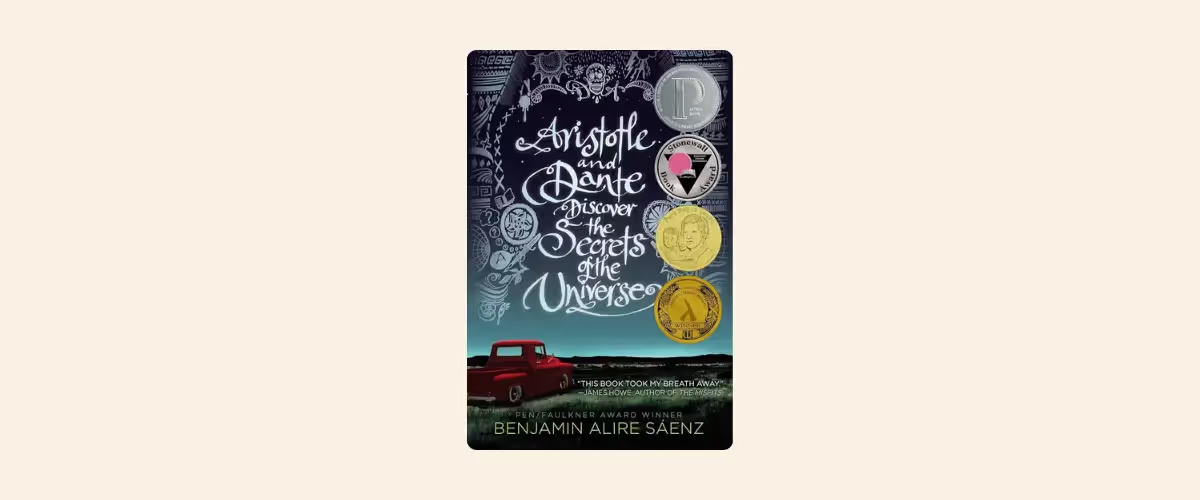
Aristotle and Dante Discover the Secrets of the Universe by Benjamin Alire Sáenz (2012)
In Aristotle and Dante Discover the Secrets of the Universe, two Mexican-American boys, Aristotle ‘Ari’ Mendoza and Dante Quintana, form an unexpected and transformative bond in 1987 El Paso. Told from Ari’s perspective, the novel explores themes of identity, sexuality, and self-acceptance.
This award-winning novel has been praised for its honest portrayal of adolescence, as the story delves into Ari’s struggles with his family and his emerging feelings for Dante. The book was highly critically acclaimed and won the Michael L. Printz Award Honor, the Stonewall Book Award, and the Pura Belpré Narrative Medal for Latino Fiction.
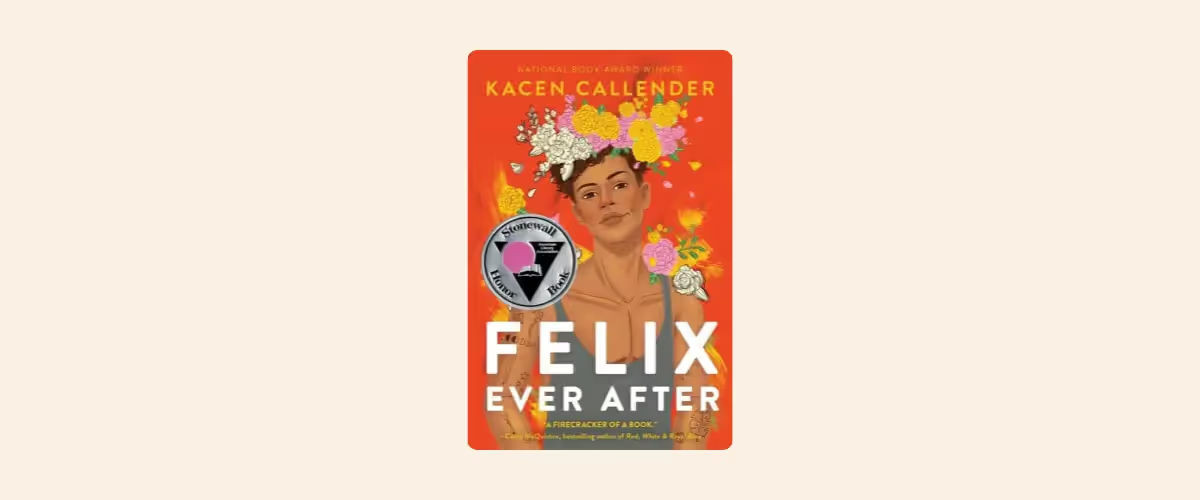
Felix Ever After by Kacen Callender (2020)
Kacen Callender’s Stonewall Honor-winning novel follows Felix Love, a Black, queer, transgender teenager, as he navigates life at a prestigious arts high school in Brooklyn. When anonymous transphobic messages and his deadname appear at school, Felix is forced to confront his identity and his friendships while attempting to discover who is behind the harassment. Along the way, he becomes entangled in a complicated love triangle (like all the best YA protagonists) and deepens his understanding of his gender identity. He’s messy and imperfect and totally relatable.
Released in 2020, the novel quickly became a significant contribution to LGBTQ+ teen literature, doing essential work in providing representation for trans teens. Callender’s dedication reads: ‘For trans and nonbinary youth: You’re beautiful. You’re important. You’re valid. You’re perfect.’ Enough said, really.

Gwen & Art Are Not in Love by Lex Croucher (2023)
Centuries have passed since King Arthur’s time, and his descendant, Art, a general troublemaker, is set to become a Lord. He has been promised to Gwendoline, the sharp-tongued and fiery princess of England, since birth—but the only thing they have in common is that they both hate each other.
When Gwen catches Art kissing a boy and Art stumbles upon Gwen’s secret writings about Lady Bridget Leclair, the kingdom’s only female knight, they strike up a deal. To satisfy their families, they continue a fake-dating charade—but things get complicated as Art begins to develop feelings for Gabriel, who is not only the heir to the throne but also Gwen’s brother. As tensions rise, the characters must learn to accept who they truly are in order to find happiness and keep the kingdom united.
This novel also features delightful side characters, such as Agnes, Gwen’s lady-in-waiting, and Art’s protective bodyguard Sidney. It’s a romcom that breathes new life into the genre while maintaining all the delicious tropes and classic elements.
{{blog-banner-4="/blog-banners"}}
Final thoughts
We think you’ll agree that these titles really do deserve their place on this list as the best YA books of all time—for all the reasons Ella has given and more. Whether these characters are navigating nightmarish dystopian lands, enduring fractured dynamics between family or friends, or simply entering senior year in a very human world, their stories can be revelatory and inspiring for YA readers anywhere.
If you’re working on a novel in this genre, or even if you enjoy losing yourself in the pages of YA books in your spare time, you can confidently add these titles to your TBR list. As we’ve seen, the YA genre is growing bigger and brighter with every title published. Maybe one day soon, with the help of Ella and the other incredible writing coaches at The Novelry, yours will be one of them.
Welcome home, writers. Join us on the world’s best creative writing courses to create, write, and complete your book. Sign up and start today.
.avif)
.avif)

.avif)
.webp)
.avif)
.avif)